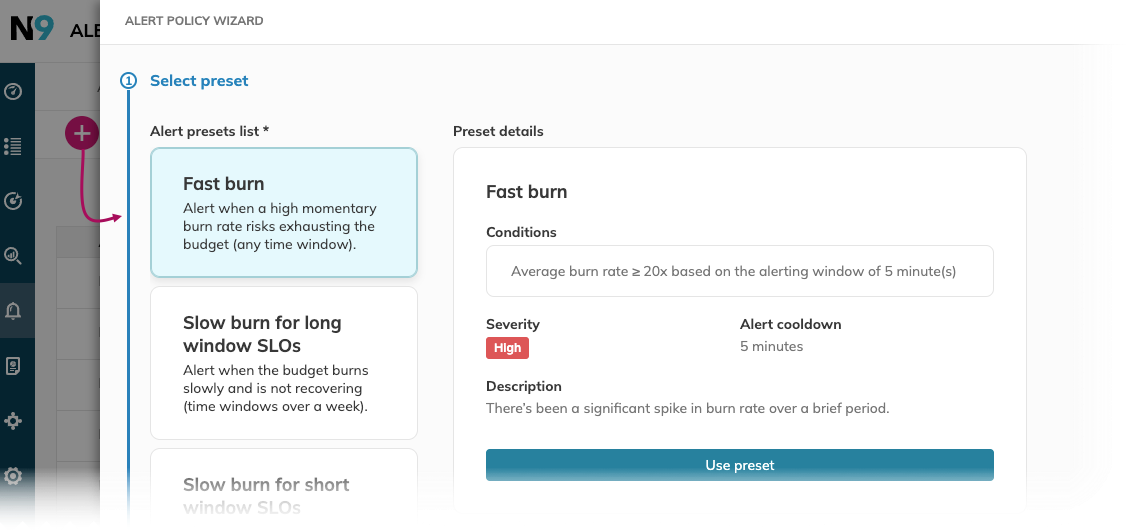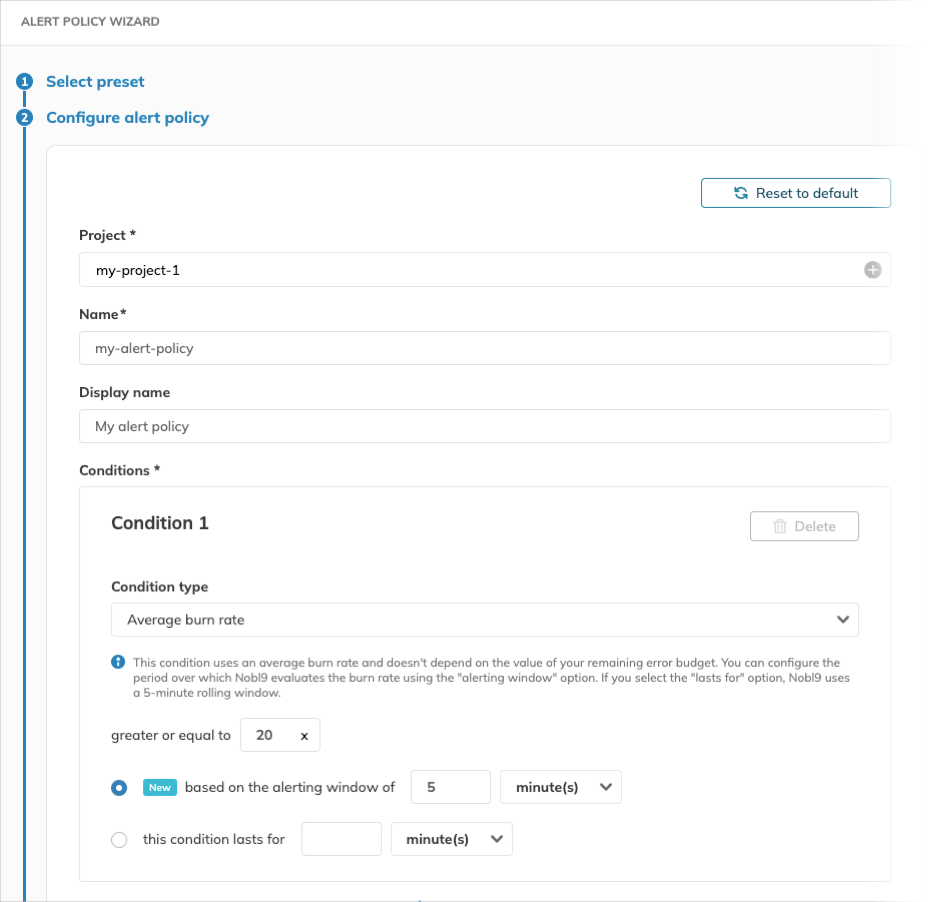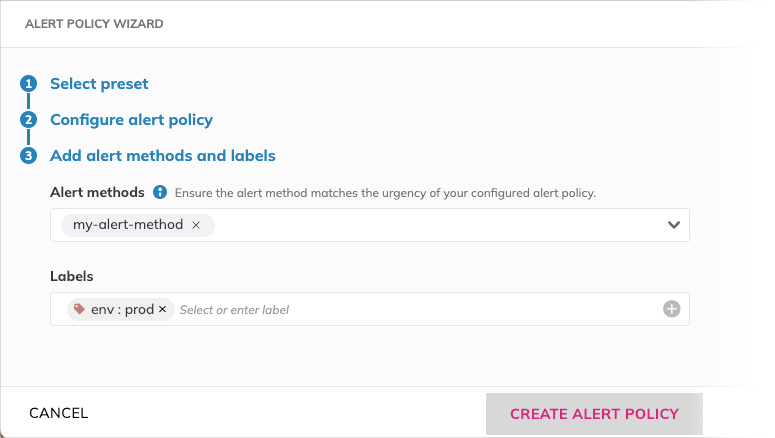Alert policies
Once you have created your SLO, you can configure an alert policy and alert method for it. An alert policy expresses a set of defined conditions you want to track or monitor. The conditions for an alert policy define what is monitored and when to activate an alert: when the performance of your service is declining, Nobl9 will send a notification to a predefined channel. Nobl9 alerting starts with creating an alert policy.
Alerting conditions are connected by AND logic. All conditions must be met to trigger the alert for such alert policy.
Alerts in Nobl9
Alerts in Nobl9 can be sent to several different tools, including PagerDuty, MS Teams, Slack, Discord, Jira, Opsgenie, and ServiceNow. Email alerts are also supported, and you can use webhooks to send alerts to any service with a REST API, such as FireHydrant, Asana, xMatters, and many more.
For more detailed information on alert methods, refer to the Alert method section of the documentation.
Creating alert policy
To create an Alert policy, go to the Alerts section on the Nobl9 Web and click 
-
Select one of the starting points:
- A preset
You can use presets as they are or modify any values for your alert policy. - Custom
To create your alert policy from scratch.

Image 1: Selecting a preset - A preset
-
Set the Project, Display name, and Name for your alert policy.
After you save your alert policy, Name becomes read-only. -
Define alert conditions, based on:
-
The alerting window which is the time range for predicting the burn rate using linear extrapolation
-
The lasts for parameter that uses a 5-minute rolling window to re-evaluate each incoming data point.
Budget drop condition configurationThe budget drop condition can be configured using the alerting window parameter only.
-
-
Set Severity and Cooldown period for your alert policy.
The cooldown starts after the first condition in an alert policy is no longer met. Nobl9 waits until the cooldown ends before sending further notifications (if any required). Cooldown lets the situation stabilize and prevents Nobl9 from sending repeated notifications.
Image 2: Configuring the basic info and conditions -
Select alert methods and add labels.
Alert methods are the channels you receive notifications like email, PagerDuty, webhook, or others. -
Click CREATE ALERT POLICY

Image 3: Adding alert methods and labels
You can find your created alert policy in the Alerts > Alert policies list. Should any alerts be triggered under this alert policy, Nobl9 provides an in-depth analysis for each.
Preset reference
Here's the description and default values of the available alert policy presets:
| Preset name | Description | Severity | Cooldown period |
|---|---|---|---|
| Fast burn | Short-lived (starting from 5 minutes) but high (20x or more) spikes of the burn rate. | High | 5 minutes |
| Slow burn | Error budget is burning without recovery (There are two variants: for short and long time windows). | Low | 5 minutes |
| Budget almost exhausted | Almost no error budget has left. | High | 5 minutes |
| Fast exhaustion | Error budget is exhausting significantly (There are two variants: for above and below budget). | High | 5 minutes |
| Slow exhaustion | Error budget is exhausting slowly and is not recovering (There are two variants: for short and long time windows). | Medium | 5 minutes |
| Slow budget drop | The budget has dropped by 5% over the last 1 hour and is not recovering. | Low | 5 minutes |
| Fast budget drop | The budget dropped by 10% over the last 15 minutes and is not recovering. | High | 5 minutes |

